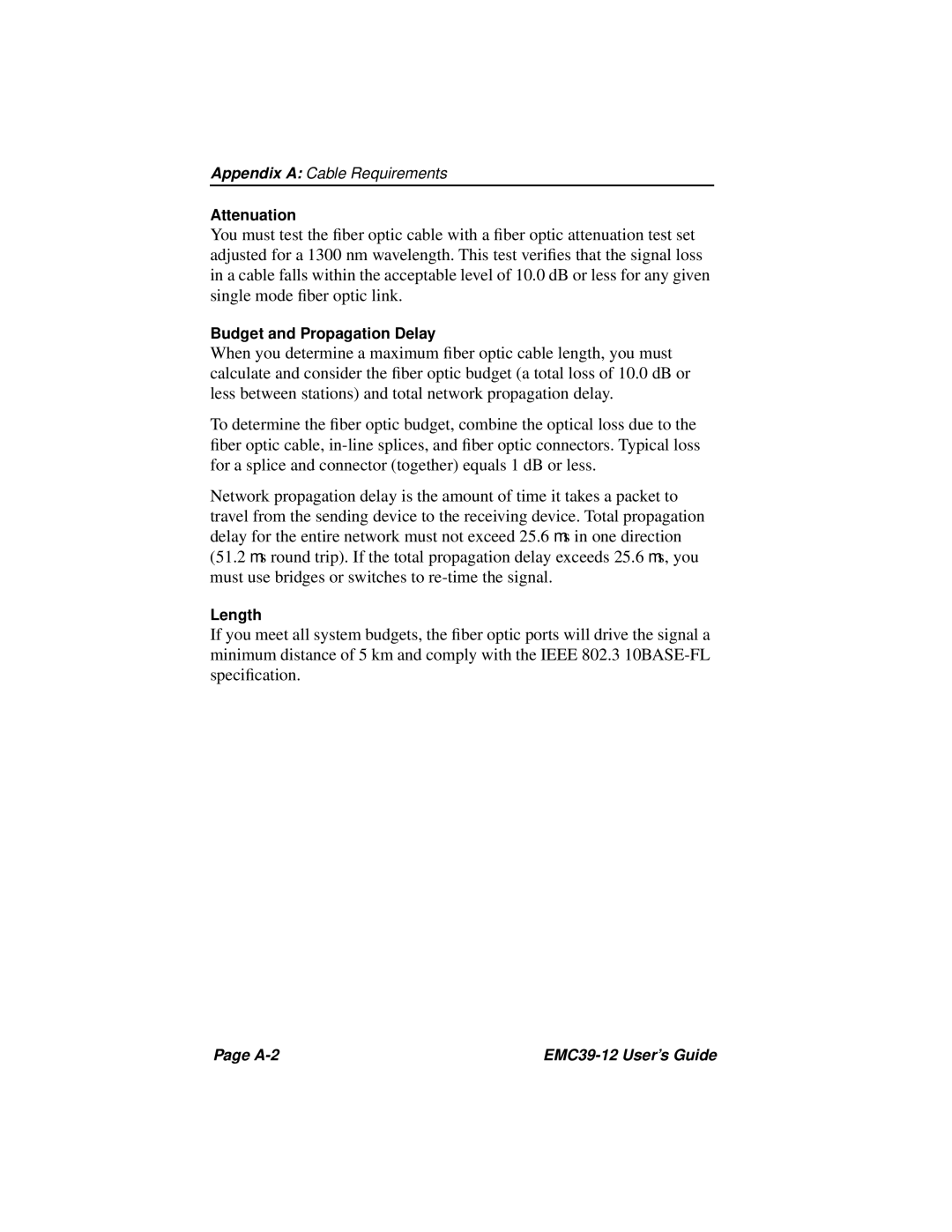Appendix A: Cable Requirements
Attenuation
You must test the fiber optic cable with a fiber optic attenuation test set adjusted for a 1300 nm wavelength. This test verifies that the signal loss in a cable falls within the acceptable level of 10.0 dB or less for any given single mode fiber optic link.
Budget and Propagation Delay
When you determine a maximum fiber optic cable length, you must calculate and consider the fiber optic budget (a total loss of 10.0 dB or less between stations) and total network propagation delay.
To determine the fiber optic budget, combine the optical loss due to the fiber optic cable,
Network propagation delay is the amount of time it takes a packet to travel from the sending device to the receiving device. Total propagation delay for the entire network must not exceed 25.6 ∝s in one direction (51.2 ∝s round trip). If the total propagation delay exceeds 25.6 ∝s, you must use bridges or switches to
Length
If you meet all system budgets, the fiber optic ports will drive the signal a minimum distance of 5 km and comply with the IEEE 802.3
Page |
|
